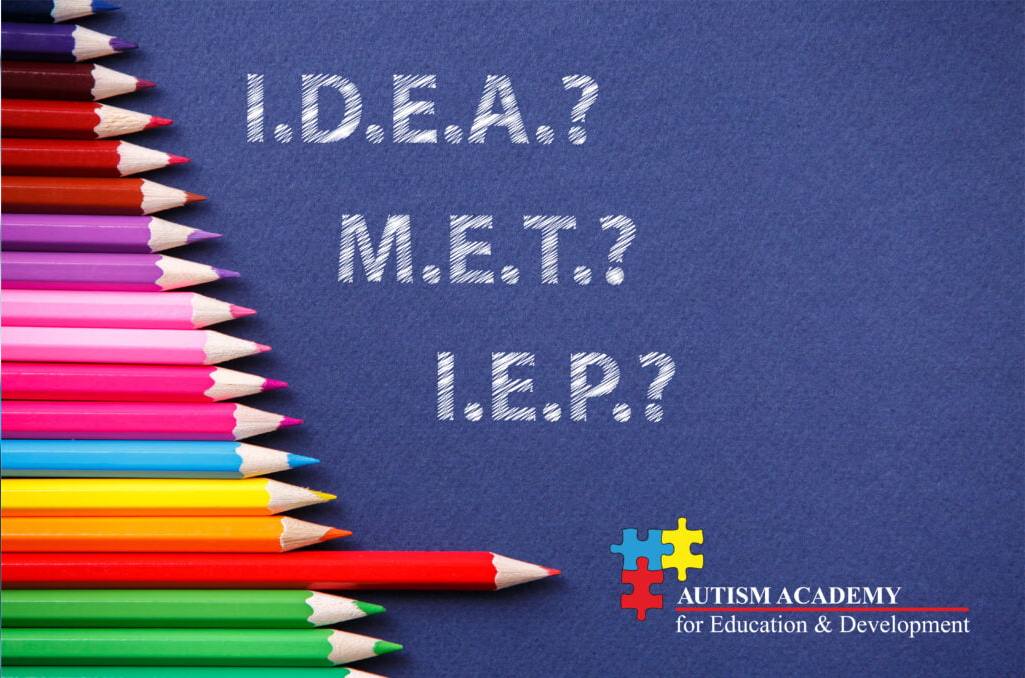Offering Individualized
Educational Programs For K-12 Students
Special Education? Everything You Need To Know!
Special Education Day is on December 2!
On December 2, 1974, President Gerald Ford signed the Individuals with Disabilities Education Act into law. This law, also known as IDEA, effectively created special education as we know it today. This law spelled out the rights of children with disabilities and the rights of their parents as they advocate for them. This year, as we celebrate national Special Education Day, we hope to answer some questions you might have. Know someone just starting their special education journey? We encourage you to share this article with them!
IDEA, FAPE, MET, IEP… What?
Like many specialized areas, special education comes with its own language. For those who are just starting out on their educational journey, it can look a bit like alphabet soup. So what does it all mean?
IDEA stands for the Individuals with Disabilities Education Act. This law ensures all children the right to a free and appropriate public education in the United States.
FAPE stands for Free and Appropriate Public Education. When this right was established, it required schools to examine the individual needs of students with disabilities and create a plan to meet their unique needs. While it isn’t perfect and there is still a lot of work to do for our kids with special needs, it was the first big step to ensure that schools began to pay attention to all learners. In Arizona, school choice is one option for families who need more control over their child’s education.
ESA stands for the Empowerment Scholarship Account program. This program is specifically for Arizona students and provides funding for your child’s education outside of the public school system. Students with an ESA scholarship can use their funds towards homeschooling, specialized therapies, and tuition for private schools like Autism Academy. 99% of Autism Academy’s students use scholarships like this one to fund their tuition.
MET stands for Multidisciplinary Evaluation Team. This team is responsible for determining which students are eligible for special education services. Teams are made up of teachers, parents, therapists, school administrators, and a school psychologist. They conduct formal testing to determine what eligibility a student might have. Public schools typically keep all of these professionals on staff, but private schools usually do not. When a student is enrolled in a private school, their local public school district will work with their family when they need a new evaluation. Autism Academy isn’t able to create a MET report, but we are always happy to give families who need updated paperwork information on how to get their local school district to complete one.
Eligibility is the educational term for disability or diagnosis. The MET team is tasked with examining all of the information from their tests and provided by the child’s parents and teachers. With that information, they determine if a child’s disability has a significant impact on their participation at school. They create a report called a MET report. These reports are done every three years when a child is enrolled in a public school. At Autism Academy, all students have a primary eligibility of autism.
IEP stands for Individualized Education Plan. For many, this document is one of the most important ones. It is created annually and it spells out what a student’s unique needs are and what the school plans to do to help that student learn and participate in their schooling.
IEPs at Autism Academy
At Autism Academy we are committed to putting kids first in every decision. For us, that includes working with families to create quality IEP documents. While many private schools no longer do any formal IEP paperwork. Autism Academy thinks it is important. From their first day in one of our classrooms, teachers are collecting data and get to know each student. This data is used to determine classroom groupings, the curriculum used, and strategies that work well for each child. Our teachers observe and test their students, but they also just spend as much time as they can with each student to build trust and rapport. Working with families is another key part of the IEP process. When your IEP meeting is scheduled you are sent a questionnaire, but the communication starts well before that.
At the IEP meeting itself you can expect a less formalized meeting than you might have experienced at other schools. Autism Academy’s IEP’s are not legally binding like in public school so we are able to make adjustments based on what the student needs even if it is not listed in the IEP. During the meeting, instead of focusing on reading the paperwork to you, our teachers can focus on having a real discussion with parents about how students are doing at school and what support they need. As the teacher talks about progress, services, and goals, parents are encouraged to ask questions and give feedback. This ensures that everyone reaches an understanding of what is best for every student. After the meeting, all paperwork is made available to you through the Parent Portal. This gives you access to your child’s records at any time. At the end of each quarter, a progress report is uploaded to the Parent Portal so you can see how your child is progressing toward the IEP goals.
Still have questions? Check out some of the resources below for more information:
United States Department of Education: https://sites.ed.gov/idea/
Arizona State Department of Exceptional Student Services: https://www.azed.gov/specialeducation
Empowerment Scholarship Account Program: https://www.azed.gov/esa
Raising Special Kids: https://raisingspecialkids.org/2021/09/29/empowerment-scholarship-accounts/
Center for Parent Information and Resources: https://www.parentcenterhub.org/resourcelibrary/
Want more information about our schools?
You can visit our Enrollment page. https://aaed.org/enrollment/

